Heidelberg Castle: A Majestic Journey Through Time
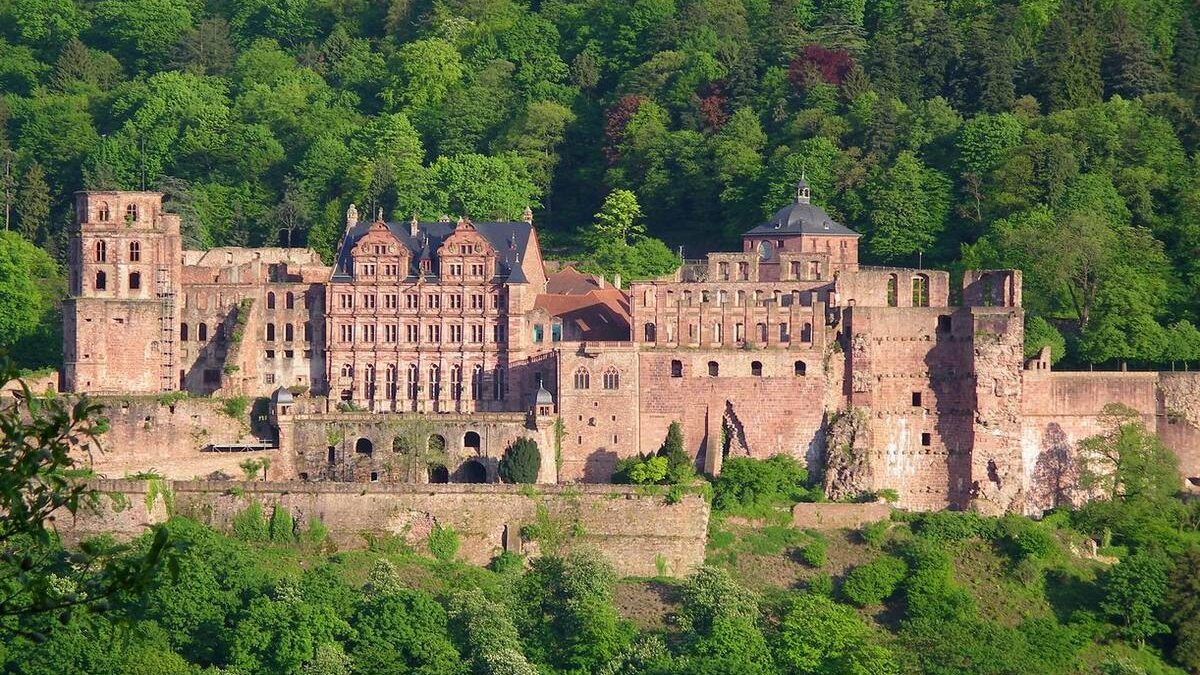
Heidelberg Castle: A Majestic Journey Through Time
Heidelberg Castle, perched majestically on the slopes of the Königstuhl hill, overlooking the picturesque town of Heidelberg in Germany, is one of Europe’s most famous and romantic ruins. This imposing structure is a testament to the region’s rich history and architectural grandeur. A visit to Heidelberg Castle offers an unforgettable journey through centuries of history, stunning architecture, and beautiful gardens. This comprehensive guide provides tourists with detailed information about Heidelberg Castle, including its history, major attractions, cultural significance, and practical tips for visiting. This unique and informative article aims to offer a complete perspective on one of Germany’s most beloved landmarks.
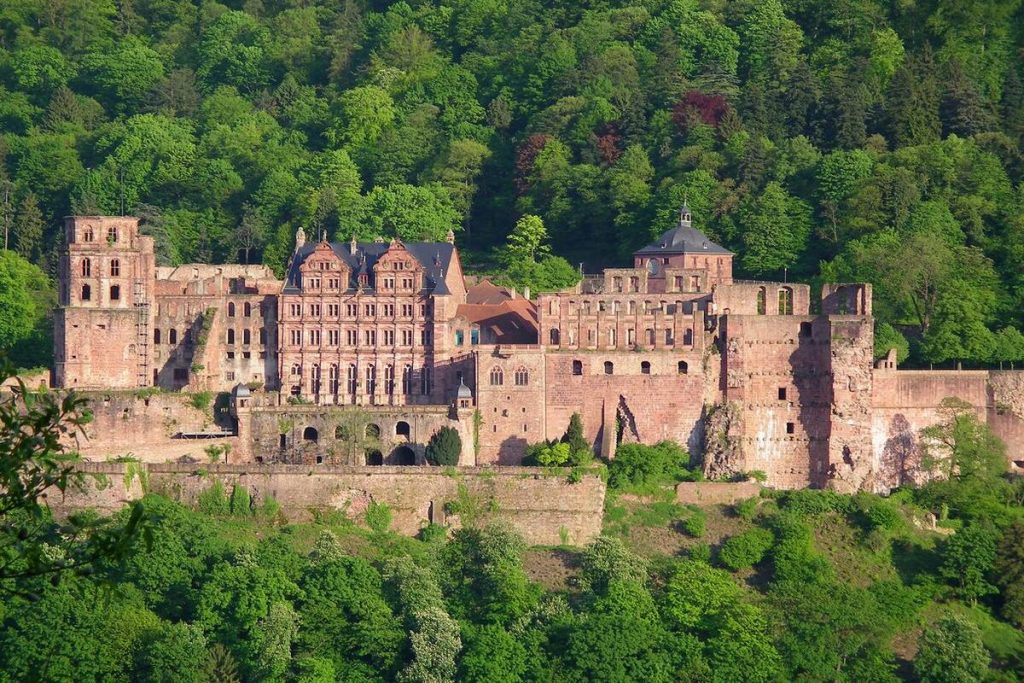
Historical Background
Origins and Early History: The history of Heidelberg Castle dates back to the early 13th century when the first parts of the castle were constructed. The castle initially served as a fortress for the Palatinate electors, the ruling dynasty of the region.
- 13th to 14th Century: The earliest records of Heidelberg Castle mention a single structure built around 1214. Over the following century, the castle expanded significantly as the Palatinate electors grew in power and influence.
- 15th Century: During this period, the castle saw considerable growth and transformation under Elector Ruprecht III, who became King of Germany. The construction of the Ruprecht Building marked the beginning of the castle’s transition from a fortress to a royal residence.
Renaissance Splendor: The 16th and early 17th centuries marked the height of Heidelberg Castle’s architectural grandeur. Elector Friedrich II and his successors commissioned extensive renovations and expansions, embracing the Renaissance style.
- Ottheinrich Building: One of the most significant additions during this period was the Ottheinrich Building, constructed between 1556 and 1559. This building is renowned for its intricate Renaissance facades adorned with statues of the electors.
- Friedrich Building: Another notable addition was the Friedrich Building, built between 1601 and 1607, which housed the royal apartments. Its ornate façade and decorative elements exemplify the Renaissance influence.
Destruction and Decline: The castle’s fortunes changed dramatically during the 17th and 18th centuries due to political and military conflicts.
- Thirty Years’ War: Heidelberg Castle suffered extensive damage during the Thirty Years’ War (1618-1648), a devastating conflict that ravaged much of Europe.
- War of the Grand Alliance: The castle faced further destruction in the late 17th century during the War of the Grand Alliance when French troops under Louis XIV attacked and partially demolished the structure.
- 18th Century: Efforts to restore the castle in the early 18th century were thwarted by a lightning strike in 1764, which caused significant damage and marked the beginning of its decline into ruin.
19th Century and Romanticism: Despite its ruinous state, Heidelberg Castle became a symbol of Romanticism in the 19th century, attracting poets, painters, and tourists who were captivated by its picturesque beauty and historical significance.
- Preservation Efforts: In the 19th century, efforts were made to preserve the castle as a historical monument. The ruins were stabilized, and parts of the castle were restored to their former glory.
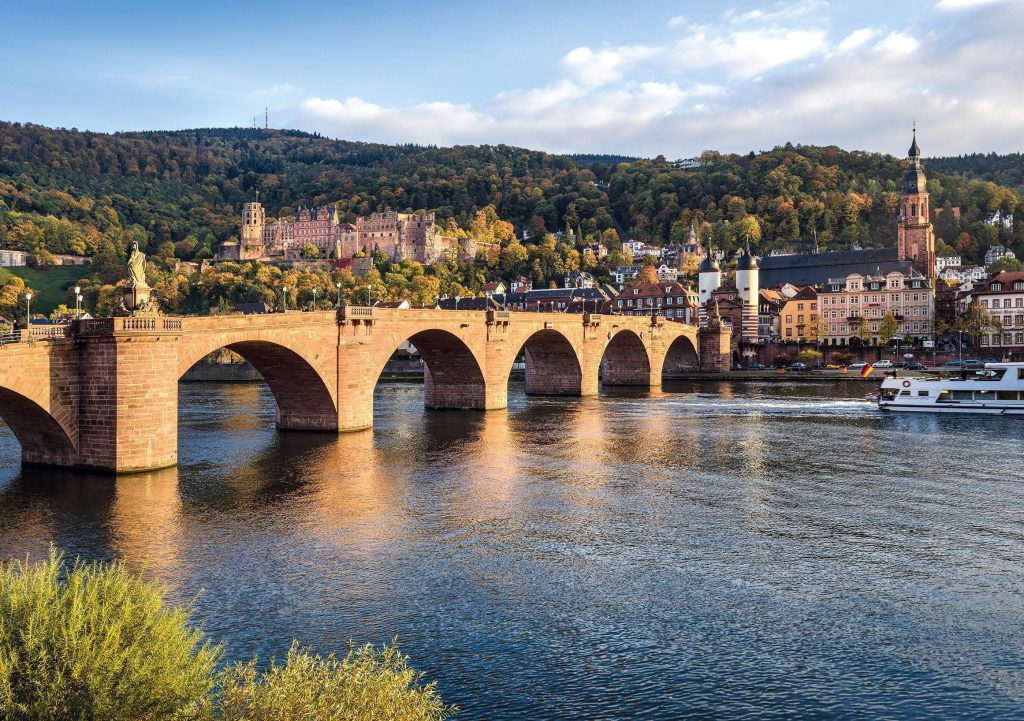
Major Attractions
The Great Terrace and Courtyard: The castle’s Great Terrace offers breathtaking panoramic views of Heidelberg, the Neckar River, and the surrounding valley. The courtyard, accessible from the terrace, is the heart of the castle complex, surrounded by impressive buildings and ruins.
The Friedrich Building: One of the best-preserved parts of Heidelberg Castle, the Friedrich Building houses the German Apothecary Museum and features opulently decorated rooms that reflect the grandeur of the Renaissance period.
- German Apothecary Museum: Located in the Friedrich Building, this museum showcases the history of pharmacy and medicine, with exhibits ranging from ancient remedies to 19th-century apothecary shops.
The Ottheinrich Building: Although partially in ruins, the Ottheinrich Building is renowned for its exquisite Renaissance façade adorned with statues of the electors and intricate carvings.
The Heidelberg Tun: One of the castle’s most famous attractions is the Heidelberg Tun, an enormous wine barrel located in the cellars. Constructed in 1751, it has a capacity of over 220,000 liters (58,100 gallons) and symbolizes the region’s wine-making tradition.
The King’s Hall: Originally used for banquets and celebrations, the King’s Hall is now a venue for various events, including the annual Heidelberg Castle Festival, which features concerts, theatrical performances, and cultural events.
The Castle Gardens (Hortus Palatinus): Designed in the early 17th century, the castle gardens were once considered among the most beautiful in Europe. Although they were never fully completed, the terraces, fountains, and sculptures offer a glimpse into their former splendor.
- The Elisabeth Gate: Erected in a single night in 1615 as a birthday gift from Elector Friedrich V to his wife, Elisabeth Stuart, the gate is a romantic symbol within the gardens.
The Powder Turret: Partially destroyed by an explosion in 1693, the Powder Turret stands as a dramatic ruin within the castle complex. Its massive walls and gaping cracks illustrate the castle’s turbulent history.
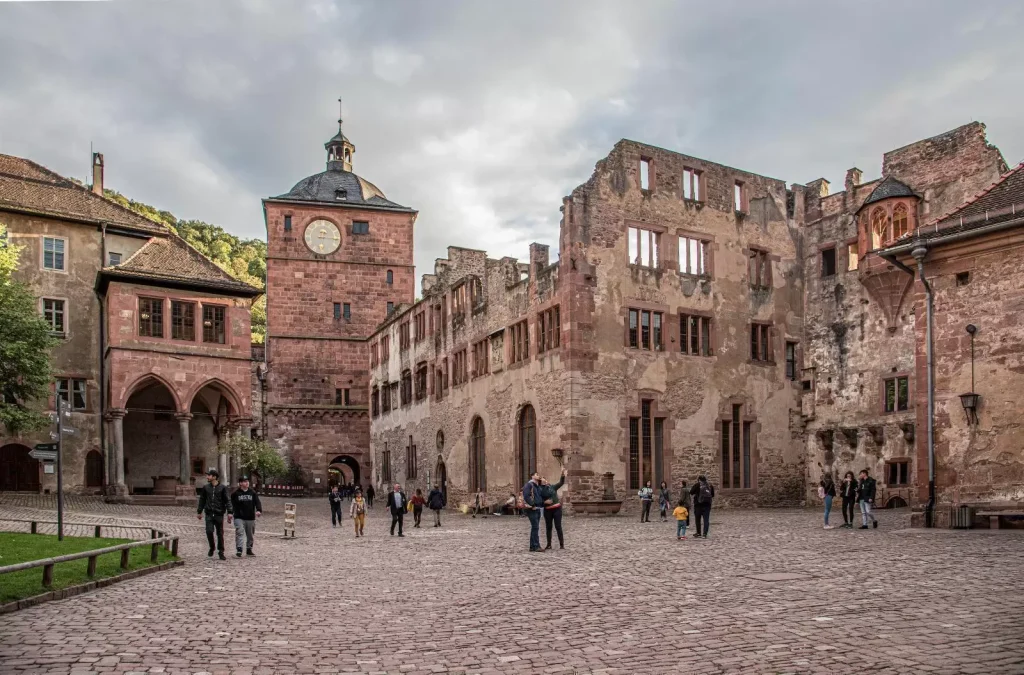
Cultural Significance
Symbol of Romanticism: Heidelberg Castle played a pivotal role in the Romantic movement of the 19th century. Its picturesque ruins inspired poets, artists, and writers, including Johann Wolfgang von Goethe and Victor Hugo, who were captivated by its melancholic beauty and historical depth.
Historical Legacy: As the former residence of the Palatinate electors, Heidelberg Castle is a symbol of the region’s political and cultural heritage. It reflects the architectural and artistic trends of the Renaissance and Baroque periods.
Tourism and Education: Today, Heidelberg Castle is one of Germany’s most visited tourist attractions, drawing visitors from around the world. It serves as an educational site where visitors can learn about the history, architecture, and cultural significance of the region.
Heidelberg Castle Festival: The annual festival held at the castle features a diverse program of cultural events, including concerts, theater performances, and fireworks. It celebrates the castle’s historical and cultural heritage and attracts thousands of visitors each year.
Practical Tips for Visiting Heidelberg Castle
Best Time to Visit: Heidelberg Castle is open year-round, but the best times to visit are during the spring (April to June) and autumn (September to October) when the weather is pleasant, and the gardens are in bloom. The summer months (July and August) are also popular but can be crowded.
Getting There: Heidelberg Castle is accessible by various means of transportation.
- By Car: Heidelberg is well-connected by road, and there are several parking options near the castle. From the parking area, visitors can take a shuttle bus or walk up the hill to the castle entrance.
- By Public Transportation: The castle can be reached by bus or the Bergbahn funicular railway, which departs from the Kornmarkt in Heidelberg’s Old Town. The funicular offers a scenic ride up the hill to the castle.
- By Foot: For those who enjoy walking, the castle is accessible by foot from Heidelberg’s Old Town. The walk takes about 15-20 minutes and includes a series of steps and paths through the forest.
Opening Hours and Admission: Heidelberg Castle is open daily, with varying hours depending on the season. Admission tickets include access to the courtyard, the Great Terrace, the German Apothecary Museum, and the Heidelberg Tun. Guided tours are available for an additional fee and provide a more in-depth exploration of the castle’s history and architecture.
Visitor Tips:
- Wear Comfortable Shoes: The castle complex is extensive, and visitors will need to walk and climb stairs. Comfortable footwear is recommended.
- Plan for the Weather: Heidelberg can experience variable weather. Bring appropriate clothing and gear, such as a raincoat or sunscreen, depending on the season.
- Guided Tours: Consider taking a guided tour to gain deeper insights into the castle’s history, architecture, and significance. Audio guides are also available for self-guided tours.
- Allocate Enough Time: Plan to spend at least two to three hours exploring the castle and its grounds thoroughly.
Nearby Attractions: While visiting Heidelberg Castle, consider exploring other attractions in Heidelberg and the surrounding area:
- Heidelberg Old Town: Wander through the charming streets of Heidelberg’s Old Town, with its historic buildings, shops, and cafes.
- Philosophenweg (Philosophers’ Walk): This scenic path offers stunning views of Heidelberg and the Neckar River and is a popular spot for a leisurely stroll.
- University of Heidelberg: Founded in 1386, the University of Heidelberg is Germany’s oldest university. Visitors can explore its historic buildings and learn about its illustrious history.
- Heidelberg Zoo: Located along the banks of the Neckar River, the Heidelberg Zoo is a family-friendly attraction with a wide variety of animals and exhibits.
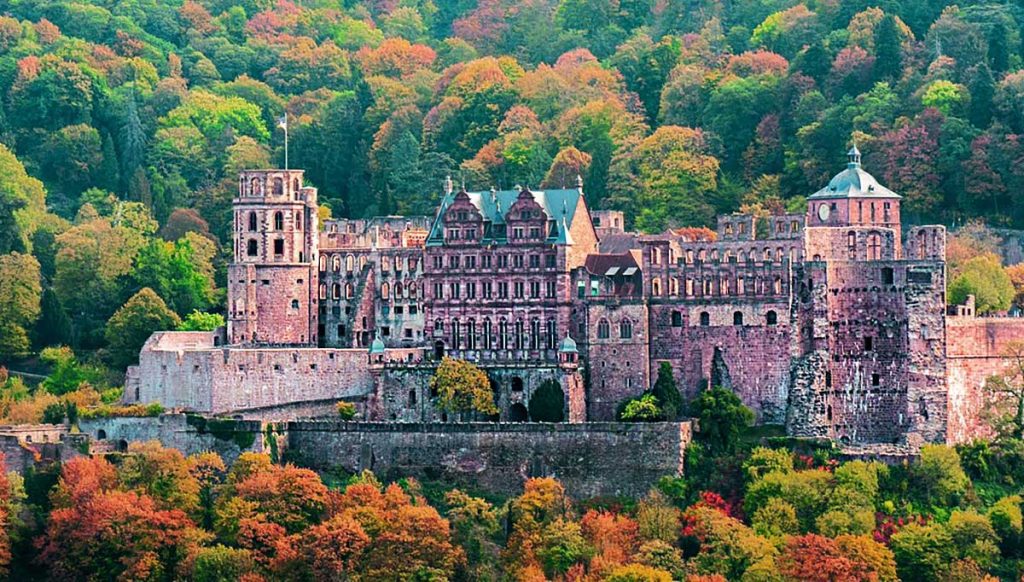
Unique Features and Emotional Impact
Architectural Beauty: The architectural beauty of Heidelberg Castle is a highlight for many visitors. The intricate details of the Renaissance facades, the grandeur of the Friedrich Building, and the picturesque ruins all contribute to the castle’s enchanting appeal.
Panoramic Views: The views from the Great Terrace and other vantage points within the castle complex offer breathtaking panoramas of Heidelberg, the Neckar River, and the surrounding hills. These views are especially captivating at sunset.
Historical Depth: Walking through Heidelberg Castle, visitors can feel the weight of history and the legacy of the Palatinate electors. The castle’s role in the political and cultural developments of the region
is palpable in its architecture and artifacts.
Romantic Atmosphere: The romantic atmosphere of Heidelberg Castle, with its evocative ruins, beautiful gardens, and historical significance, makes it a favorite destination for couples and romantics. The castle’s charm has inspired countless love stories and artistic creations.
Cultural Enrichment: Visiting Heidelberg Castle provides a rich cultural experience, offering insights into the architectural styles, artistic trends, and historical events that have shaped the region. The German Apothecary Museum and the annual Heidelberg Castle Festival further enhance the cultural enrichment.

Conclusion
Heidelberg Castle, with its majestic architecture and profound historical significance, is truly one of Germany’s most extraordinary landmarks. From the stunning views of the Great Terrace and the architectural splendor of the Friedrich and Ottheinrich Buildings to the rich cultural exhibits and romantic atmosphere, Heidelberg Castle offers a wealth of experiences for visitors.
As a must-visit destination, Heidelberg Castle invites travelers to immerse themselves in the beauty and grandeur of Germany’s historical heritage. Whether exploring the intricate details of the castle’s architecture, learning about the legacy of the Palatinate electors, or simply enjoying the tranquil surroundings, visitors are sure to leave with lasting memories.
Plan your visit to Heidelberg Castle, embrace its unique features and historical significance, and discover why it remains one of the most beloved and iconic landmarks in the world. From its majestic ruins and stunning gardens to its rich cultural heritage, Heidelberg Castle offers a magical journey into the heart of Germany’s historical and cultural legacy.
-
Heidelberg Castle: A Majestic Journey Through Time
Heidelberg Castle: A Majestic Journey Through Time Heidelberg Castle, perched majestically on the slopes of the Königstuhl hill, overlooking the picturesque town of Heidelberg in Germany, […]




